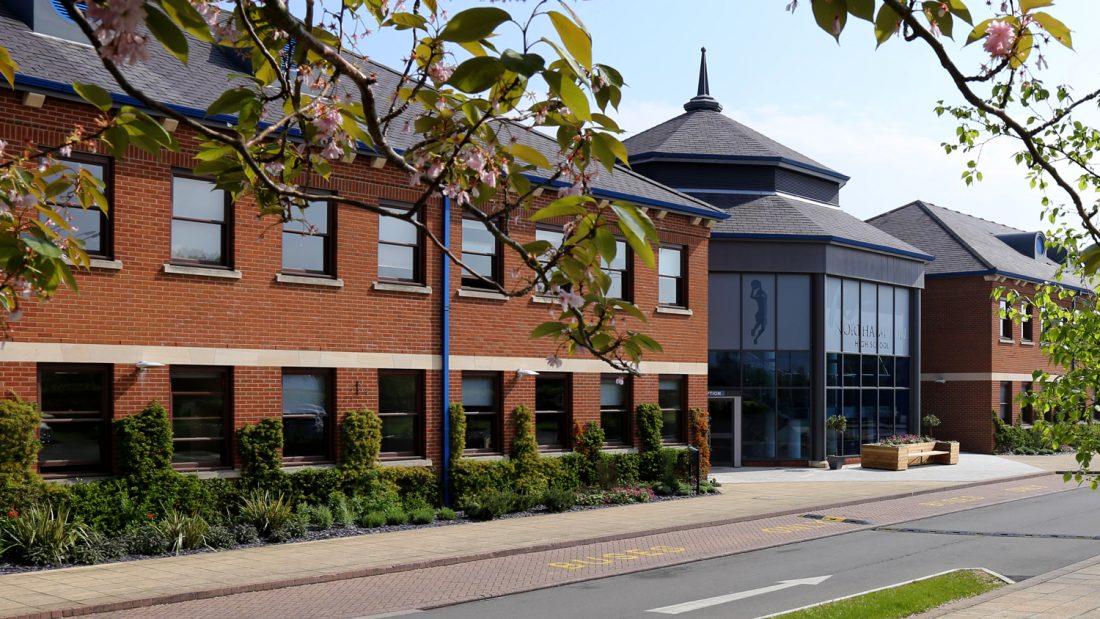
At the beginning or the summer term 1878, at the height of Queen Victoria’s reign, the doors of 83 Abington Street, Northampton were opened to twenty-nine pupils with the intention of providing them with ‘a thorough and systematic English Education at a moderate cost’.
The school, initially advertised two-months earlier as “Northampton Middle-Class Girls’ School” and which was later to become “Northampton High School for Girls” was born just five years after what was to become the Girls’ Day School Trust (GDST), of which the school is now a member and at a hugely important time in changing the way in which young women were educated.
By the spring of 1879, just one year after opening, the school was renamed “The Clevedon School – A Church High School for Girls”, the ‘High’ fashionably emphasising that the school offered more than just an elementary education, and fees were 12 shillings per term for the under 12s and 28 shillings for the over 12s.
By the end of 1881, the school had its third Headmistress (just) in the shape of Miss Waldron, her predecessor having been in post for just one month. An early leader but one of many, including Miss Alice Straker, who led the school for 21 years from December 1890, introducing the motto ‘‘The Utmost for the Highest”, and overseeing the name change to “Northampton High School for Girls” in 1898.
Miss Elizabeth Mary Wallace served as Headmistress from the autumn of 1912 and was the first of its leaders to hold the equivalent of an honours degree. She found new premises that would meet the requirements of the Board of Education and the school relocated to Castillian House, at the corner of Castillian Street and Derngate, for 5 years from 1914.

School photo – 1925
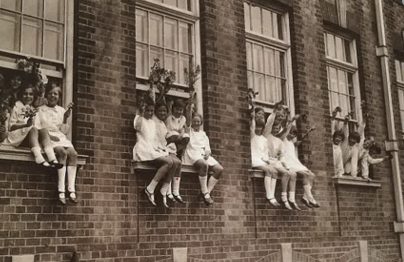
Prince of Wales visit, 1927
Miss Wallace oversaw the school’s Golden Jubilee celebrations in 1928 and on speech day, which was attended by H.R.H Princess Mary (later Princess Royal), and just one year after a visit from the Prince of Wales, she laid out her vision:
“I have dreamed of many things that I have wanted for our school: I am a dreamer of dreams and a seer of visions; perhaps they are practical ones, or there is some magic in the school, for one by one they are being realised. When I first knew the school, it had no garden; and although we were about to lose even the building, I dreamed of a fair and spacious garden for it. Today, in the very heart of the town, we have a delightful home with beautiful grounds and a fine view over open country…” – Miss Wallace, December 1928
This period brought new opportunities for women, and Miss Wallace wasn’t the only woman to benefit from the opportunity to pursue in-depth study via Higher Education. In a year that had seen all women in Britain gain equal voting rights with men, she added in her Jubilee speech that “the fight for equal opportunities for women and for men has been won: our girls have entered into a noble heritage, and men of vision help the work forward. The girls have won their freedom: we pray that they may use it nobly and well in the service of mankind.”
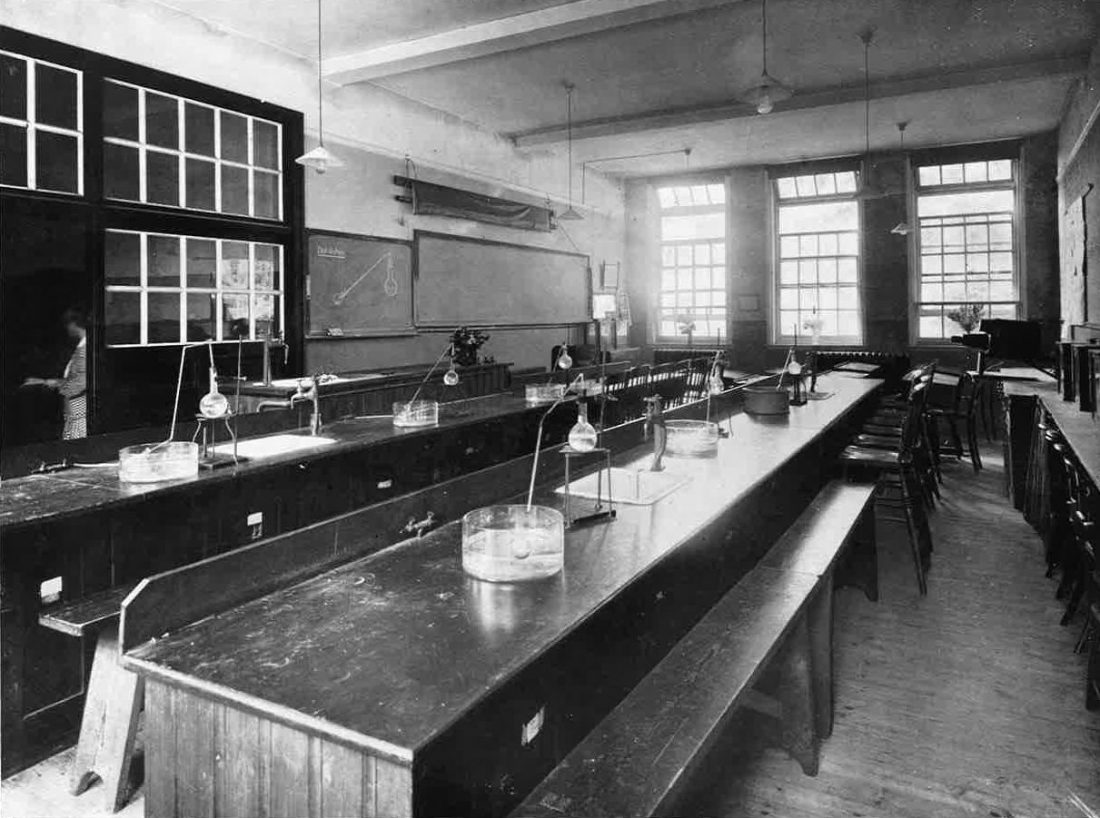
Science laboratory, 1930
1933 saw celebrations of a different type as the school celebrated Miss Wallace’s 21 years as headmistress. Old Girls provided a cake with twenty one candles and presented her with a gold watch. In turn, she presented the school with a striking clock, which stood in the front hall at 44 Derngate until 1992, when the school moved to its current site. The clock currently stands in the Edward Cripps Room (ECR), adjacent to the Senior School library.
As Miss Wallace finally said goodbye to the school and a job that had been her life on 28 July 1937, and leaving a substantial sum of money for the scholarship fund, the school had almost 200 pupils; by the time her successor, Miss Marsden (a Mathematics graduate from Westfield College, London) left, there were over 700.
The war years may have seen sandbags in the cloakrooms and regular ‘shelter’ practice for the girls but they were, thankfully, relatively untouched by the happenings in Europe and by the middle period events such as Sports Days and Open Days had resumed with the former seeing intense rivalry between the four houses (then St. Monica’s, St. Hilda’s, St. Elizabeth’s and St. Cecelia’s).
Over the next few years, the Governors purchased Towerfield in Derngate for the Junior School (1941) and Spring Hill in Cliftonville was bought (1947), allowing the school to be reorganised into three distinct sections: Spring Hill (girls from 3 to 9); Towerfield (girls from 9 to 11) and Main School (girls from 11 to 19). In the midst of this, the 1944 Education Act awarded Direct Grant Status, allowing free places for girls, should they reach the required academic standard.
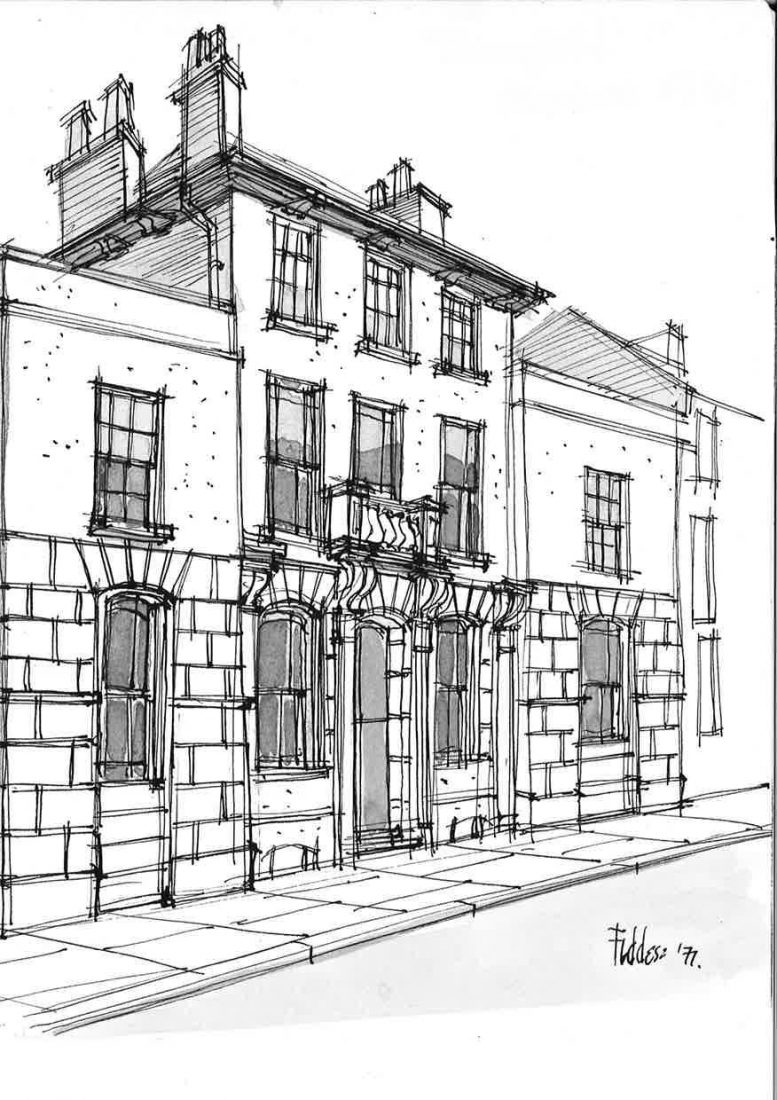
1941 – Towerfield
This Act, written 16 years after Miss Wallace’s comment that “the fight for equal opportunities for women and for men has been won”, also enabled female teachers to retain their teaching position after marriage for the first time. Despite this, it would be another 44 years before the school appointed its first married headteacher, Mrs Linda Mayne.
Much of the building work and purchasing of school buildings over the following few years, including the Assembly Hall, Gymnasium and Library (1957) and 68 Derngate, was down to the generosity of the Cripps family, known for their philanthropic philosophy and the structure of the main school was feasible due to further benefaction from Mr Humphrey Cripps, (later Sir Humphrey). As such, the building was named in his honour.
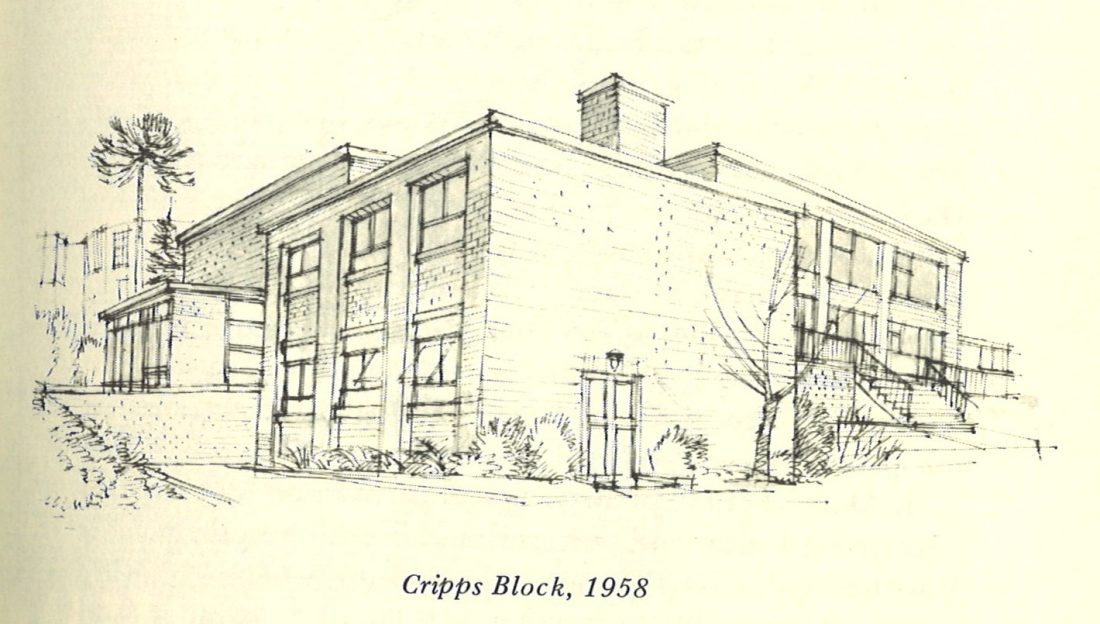
The Cripps Block, 1958
At Speech Day in 1986, the then-Head, Miss Lightburne announced that an anonymous donor had purchased a considerable number of acres of land in Hardingstone to build a complete new school, to house all the girls from the ages of 3 to 18 on the same site, together with a purpose-built sports complex. This was an amazing gift that turned out to be yet another from the Cripps Foundation and planning permission to begin the build was granted in March 1987. Sir Humphrey Cripps’ son, Mr Edward Cripps, was appointed to oversee the project.
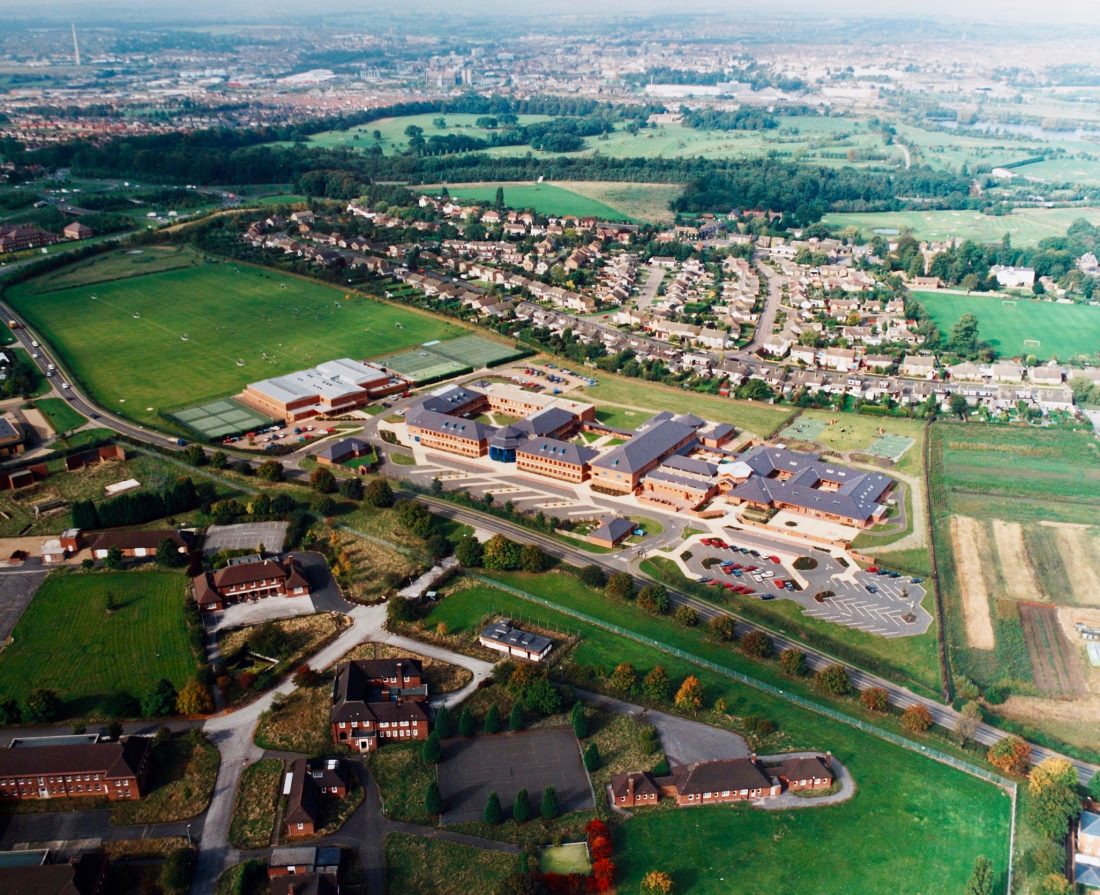
Aerial photo of Hardingstone site
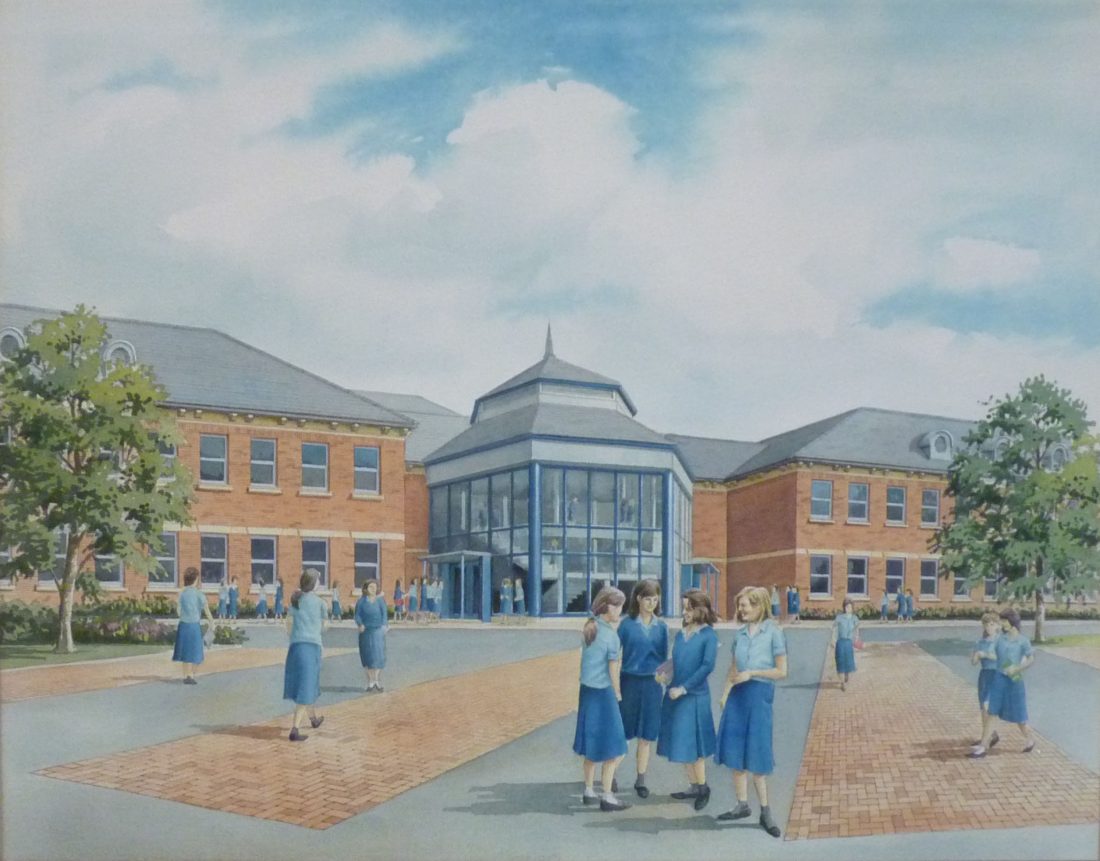
Artist’s impression of Main Foyer, Hardingstone site
By January 1990, The Sports Complex on the new Hardingstone site was opened and girls were able to travel there to use the facilities for eight terms before the classrooms were ready for a permanent move on 8 September 1992. One month later, the site was officially opened by Her Majesty Queen Elizabeth II and 15 years later we joined the GDST (Girls’ Day School Trust).
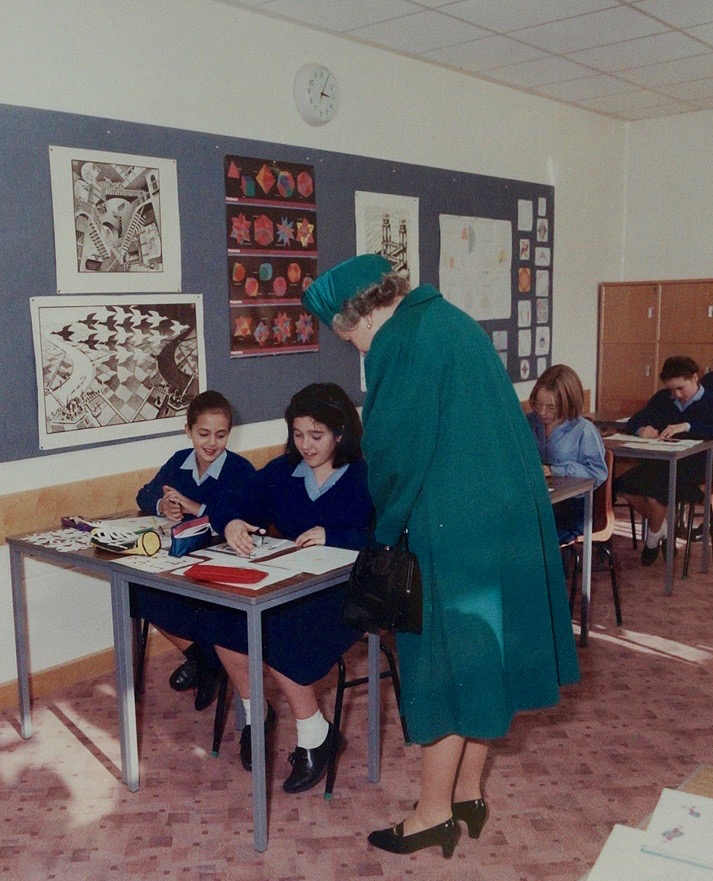
The Queen formally opening the Hardingstone site on 16 October 1992.

2007 – The High School joined the Girls’ Day School Trust (GDST)
The school may have seen many changes over the years, but the strong sense of community and of loyalty has never waivered and we are fortunate to have an incredibly strong alumnae network. Indeed, the OGA (Old Girls and Associates of Northampton High School) which encompasses a wider group and is currently under the leadership of Mrs Carolyn White, ex-teacher and parent at the school, is thriving. With regular newsletters and an annual lunch, those who have experienced the spirit of Northampton High School – be it at in Derngate, Hardingtone, as a member of the wider GDST or not – are able to share their particular memories of their time at Northampton High School and contemplate the effect that those years have had on their relationships and their lives in the years since.

OGA reunion lunch, January 2020
Readling the history of the High School, it could be argued that we are currently experiencing the most disrupted period ever, but we are creating our own history here and now, and will talk about ‘the COVID months’ for years to come. So many have been adversely affected by the current pandemic, but the sense of community, cohesion and camaraderie is as strong as ever and we know that we will pull through this period together.
Happy 143rd birthday, Northampton High School, and here’s to being able celebrate in person very soon!
Caroline Petryszak
Headmistress